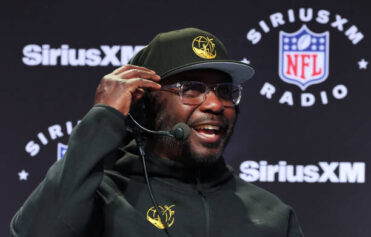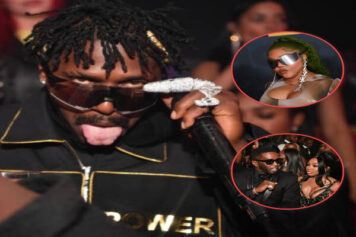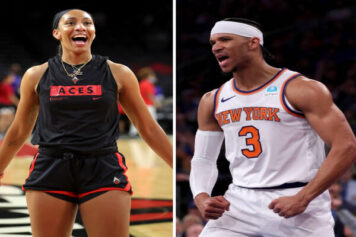Lamont Coleman was a lyrical beast.
Known in hip hop as Big L, the diminutive rap artist was an oxymoron physically but a giant verbally. Hailing from the village of Harlem, Big L was one of the 90s brightest lights cut short due to violence. The killing of rappers has become par for the course in Hip-Hop culture, but back in 1999, the rap world was still recovering from the untimely murders of Biggie & Tupac when another elite lyricist was taken by jealousy and gun violence.
22 years later and the laundry list of dead rappers stretches as long as the Bronx River Parkway.
Big L’s era was one of ultimate optimism in hip hop culture, where collectives were formed. Former solo artists would band together and create groups that would then align with like-minded thinkers and create movements.
Diggin’ In The Crates
Such was the case with the Diggin’ In The Crate crew also known as D.I.T.C.
The hip-hop collective fused MC’s and producers that all embodied the purity of the Boom Bap. Lyrical dexterity mattered and so did a firm understanding of the dangers of the streets. It is why the team hailing mainly from The Bronx and Harlem formed out of mutual respect for the nonconformist style of the underground.
Consisting of Lord Finesse, Diamond D, Fat Joe, Showbiz & AG, Buckwild, Big L, and O.C. (the only Brooklynite), D.I.T.C.’s legacy defines the underground. Artists today like the late Mac Miller and Logic have sampled or copied the cadence of this crew.
However, as nice as all the members were for their gritty street tales over jazz-influenced smooth beats, Big L was the nicest. He reminded you of the little guy in every hood that moved with that confident swagger of a rhyme slinger. You knew Big L would rip you apart and he never disappointed.
From showcasing his skills on the legendary Stretch & Bobbito radio show in NYC to blazing features on his crew’s singles, Big L was a problem. The Lennox Avenue resident embodied the brashness of Harlem and raised its eventual “diplomats”.
Forming the group Children of The Corn featuring Killa Cam (Cam’ron), Murda Mase (Ma$e), McGruff and Bloodshed, he was the first to release a horror-core record. This style has now been popularized by Tech9ine, Eminem and Insane Clown Posse.
When you were as good as Big L, you could do anything and he moved with the dexterity of a man possessed by his own abilities.
Flamboyant
After releasing his first album Lifestyles ov da Poor & Dangerous on Columbia Records, Big L was frustrated. His two big singles: Put It On featuring Kid Capri and M.V.P. reached the Top 25 of Billboard’s Hot Rap Tracks. His album debuted at #149 on the Billboard 200.
However, an independent thinker can rarely mesh well with big corporate and that was exactly the angst he was going through with the record label system.
After disputes with the production of label executives, Big L was dropped from Columbia Records. The same label that would eventually sign Nasty Nas and give him and Large Professor production autonomy got it wrong with Big L.
As a result, he founded his own label Flamboyant Entertainment. He also founded another group, The Wolfpack, featuring Cam’ron, McGruff and C-Town. Constant collaborator Bloodshed, also Cam’ron’s cousin had died in a car accident changing the dynamic of their team.
Soon, a childhood friend and Harlem connector, Damon “Dame” Dash caught wind after hearing the revolutionary single Ebonics. In the song, ‘L’ breaks down hood terminology like a professor teaching a swagger-less class. If you didn’t understand the nuances of Uptown NYC street slang, you would now.
My weed smoke is my lye
A ki of coke is a pie
When i’m lifted im high
With new clothes on i’m fly
Cars is whips and sneakers is kicks
Money is chips, movies is flicks
The flow was stacked and rapid-fire leaving you breathless with his delivery.
Dash knew the potential and he immediately attempted to sign Big L. When you think about what Roc-A-Fella Records means to hip hop today, imagine what a roster of Jay-Z and Big L would have done.
Unfortunately, the world would never experience that label pairing.
Untimely Death
On February 15th, 1999, Big L was shot nine times and killed in his Harlem stomping grounds. Many theories have arisen about his death being retaliatory for something his brother did. As a result, a man named Gerard Woodley was arrested three months after but was subsequently released and the murder case remains unsolved. Woodley was killed in 2016 in the same neighborhood.
Big L’s second album, The Big Picture, was released posthumously in 2000, debuting at thirteen on the Billboard 200. A month after its release it was certified gold.
Big L is considered one of the most auspicious storytellers in hip-hop history. Instilling fear in notables like Nas and spawning current legends like Cam’ron, his energy will be felt throughout the culture forever.



